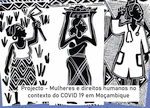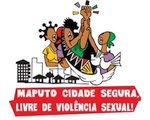Unsafe abortion in Maputo
Fernanda Machungo
In Mozambique, like in other low-income countries, particularly in Africa, unsafe abortion is one of the main causes of maternal mortality. It is defined as the death of a woman during pregnancy or within 42 days after childbirth, irrespective of the duration or location of the pregnancy, due to any cause related to or aggravated by the pregnancy or because of measures taken in relation to the pregnancy. The magnitude of maternal mortality in Mozambique is not known, but it is estimated to be between 500 and 1500 deaths per 100 000 live births. Likewise, the extent of unsafe abortion is unknown. Studies conducted at hospitals between 1990 and 2000, namely, at the Department of Obstetrics and Gynaecology at HCM (Maputo Central Hospital), revealed that 8 to 11% of maternal deaths occurring in this period were due to complications of unsafe abortion. However, we believe that these figures only represent the tip of the iceberg, since they do not include those women who did not have serious and immediate complications requiring hospital care, or who, for various reasons, did not seek hospital care, many of whom eventually died.
According to WHO, unsafe abortion is defined as termination of pregnancy, either by people who do not have the required expertise or in an environment without the minimum hygienic conditions, or both. On the other hand, safe abortion is termination carried out by qualified persons at renowned health institutions.
Unsafe abortion is a serious and worrying problem, not only because of the maternal deaths involved, but also because of the immediate and the medium and long-term complications. The most common immediate complications of unsafe abortion are: cervical laceration, haemorrhaging, serious infection (sepsis), uterine perforation and peritonitis (pus collecting in the abdominal cavity). The medium and long-term complications include chronic pelvic pain, ectopic pregnancy (pregnancy outside the uterus) and infertility. The social consequences, such as family breakdown and various forms of ostracism to which women are often subjected to, should also be highlighted.
Throughout the history of humanity, women with an unwanted pregnancy, irrespective of their socio-economic status, have tried to solve their problem, risking their health and their fertility and even accepting the possibility that they might die as a consequence. Often, young women and adolescents are the worst affected.
In Mozambique, the prevailing legislation contained in the retrograde 19th Century Penal Code, which is dated 1886, stipulates that abortion is prohibited in all circumstances and penalises the woman and the abortion practitioner. As a result, women with unwanted pregnancies are forced to resort to illegal abortion practitioners, where they are subjected to abortion practices in unsafe conditions, that is, without the minimum conditions of hygiene and technical safety. Up until 1985, obstetricians working at HCM, powerless, saw and treated many women, particularly young women and adolescents, with serious infections due to illegal abortions. The surgical interventions that they had to undergo to save their lives often left them infertile and unable to have children, when they did not lose their lives. We are all aware of the social consequences of a woman’s infertility or her death. On the one hand, an infertile woman can be abandoned by her partner and, on the other hand, her death can bring tragic consequences on her family, especially her children.
Measures were needed to reverse or at least control this situation. Thus, in response to this concern, the Ministry of Health issued guidelines authorising unwanted pregnancies to be terminated when they were caused by failure of contraceptive measures. Subsequently, due to the increasing evidence of the high rates of maternal morbidity and mortality related to unsafe abortion, termination was also authorised when it was requested on socio-economic grounds. As a result, today, any pregnancy up to 12 weeks can be terminated at the Department of Obstetrics and Gynaecology at HCM and at some other health units, upon a written request being made by the woman or by the couple. The consent of an adult relative is needed for adolescents of 18 years or younger.
These measures also allowed a comparative study on safe (hospital) abortion and illegal (unsafe) abortion to be conducted in Maputo, which was the first of its kind in Africa. This study contributed to a better understanding of the phenomenon of unsafe abortion. The study looked at the socio-economic profile, individual and hospital costs, the reproductive characteristics and the health consequences for women resorting to the two types of abortion.
Consequently, based on the results of these studies, we can say that women who resort to unsafe abortion are significantly younger, are not in stable relationships and are disadvantaged in terms of education, housing and family. In short: they belong to the lower echelon of society and underprivileged.
In addition to this, women having unsafe abortions had their first sexual relations and their first pregnancy at a very young age. Knowledge about contraceptives was greater in women having safe abortions and more than half of the women who had unsafe abortions had never used contraceptives. These are the women who are also at greater risk of serious complications. About a quarter of them suffered serious consequences that put their lives in danger and may have left them with serious or potentially serious after effects. The most serious consequence of unsafe abortion was the death of 3% of the women. Serious after effects of unsafe abortion are also reflected in the extremely high hospital costs.
Hospital costs were highest among women having unsafe abortions, and the opposite was found in terms of individual costs. The medical and economic implications of unsafe abortion also reflect the professional capacity of the abortion practitioner. It is significant that health workers are involved in 38% of illegal abortions. In only one third of the cases the abortions were induced at health units, indicating that the illegal abortion practitioners carry out the procedure at the woman’s home (58%) or at another house (31%)
Eighty per cent of women having unsafe abortions did not know about the possibility of having a safe abortion, while 16% of women having safe abortions found out about the possibility from health workers or friends. About one fifth of women having unsafe abortions, knowing about the possibility of safe abortion in the hospital, chose unsafe abortion for reasons of confidentiality and the limits on the gestation period for termination.
Unwanted pregnancy is most frequent among adolescents (according to the last population census, 17% of adolescents between the ages of 15 and 19 had had a child). On the one hand, this is because traditional society and its values are not respected, particularly in urban areas, and adolescents adopt western culture, including the practice of free sexual relations. On the other hand, sex education in schools is still poor or non-existent and since sexuality is taboo, parents do not discuss it with their adolescent children. Knowledge about contraceptives is also very limited and many adolescents have unprotected sex even when they do have knowledge. Consequently, unwanted pregnancies among adolescent women are frequent and many are terminated by unsafe abortion.
One aspect that deserves attention is the effect of unwanted pregnancy on girls who are not able to terminate the pregnancy. They are often forced to leave school, which has long-term consequences on the country’s efforts in the struggle for gender equality, as well as on the well being of children of single and/or uneducated mothers.
Reproductive rights and abortion
Women’s capacity to exercise their reproductive rights depends, fundamentally, on the environment they are in, on their status and on their quality of life. Conjugal and family relationships, education levels and access to economic and financial resources are also factors that determine a woman’s capacity to make choices about her reproductive health needs and her access to health services. Moreover, particularly in patrilineal societies, the “male domination” has its own effects, which range from sexual abuse within the family to attitudes that facilitate rape and a lack of support for victims of rape, including the opportunity to terminate the resulting pregnancy. Rape is the most serious of violations of sexual rights and it often results in major and possibly permanent psychological trauma for the victim, as well as unwanted pregnancy and the spreading of sexually transmitted diseases.
Social and cultural background, including religion, is an important factor affecting family planning and voluntary termination of pregnancy. Early motherhood associated with poverty is an impediment to raising the educational and economic standards of many girls and, consequently, the creation of a critical group of women able to mobilise and contribute to the struggle for gender equality, for their rights in general and for their reproductive rights in particular.
In Mozambique, where the level of education is low, particularly among women, where traditional society and cultural beliefs reinforce dependency and the absence of women’s power, where women are poor, it is clear that only a very few are able to exercise their reproductive and sexual rights. In these circumstances, adolescent girls are the most vulnerable, the most susceptible to unwanted pregnancy and become wives and mothers at a very young age. Premature marriage, which adversely affects the overall development of girls, especially in terms of their education, economic independence and also their physical and psychological health, is a violation of their rights. The lack of access to contraceptives leads to unwanted pregnancy, which in most cases ends in unsafe abortion with all the social and health consequences for these adolescents.
Unsafe abortion is one of the most significant causes of maternal mortality. Being one of the easiest to avoid, it is one of the most neglected human rights and health-related problems in the world and in Mozambique. It was only in 1994, at the International Conference on development and population in Cairo, that abortion was recognised as a health problem that needs to be addressed in all of its aspects.
In Maputo, even before the ICDP, some women had already begun to have access to safe abortion. It is predominantly young, poor women with low levels of schooling that most frequently resort to unsafe abortion, adding yet another violation to the long list of rights of which they are deprived. In this group of women in particular, unwanted pregnancy in itself reflects another right that is withheld from them, the right to contraception.
Reproductive rights are particularly difficult to address. Firstly, because there is a large emotional burden involving different concepts of morality and religious principles, as well as preconceptions about women that are deeply rooted in culture. Secondly, effective promotion of these rights is closely linked to a country’s state of development. It is obvious that the commitment to enforcing reproductive rights is more substantial in developed countries.
It is easy to say that the empowerment of women is a condition to their exercising reproductive rights. What this means in practice is a long, slow multi-sector process stretching over generations, which includes, among other aspects, changing attitudes, education, socio-economic progress and the development of women’s financial and political power.
Progress requires the efforts of many forces and social groups and sectors. Among other things, greater public education about the reproductive health problems of women, their causes and effects, sex education in schools, and greater and easier access to contraception and safe abortion facilities for unwanted pregnancies, all need to be promoted. Efforts in these areas can start to bring positive results in the short and medium-term.
BIBLIOGRAPHY:
- Rosenfield A. Abortion and women’s reproductive health. Int J Gynecol Obstet 1994; 46:173-179.
- Machungo F, Zanconato G, Bergstrom S. Socio-economic background, individual cost and hospital care expenditures in cases of illegal and legal abortion in Maputo. Health and Social Care in the Community 1997; 5:71-76.
- Machungo F, Zanconato G, Bergstrom S. Reproductive characteristics and post abortion health consequences in women undergoing illegal and legal abortion in Maputo. Soc Sci Med.1997; 45:1607-1613.
- Women of the World Laws and Policies affecting their reproductive lives: Latin America and the Caribbean. First edition. November 1997 ed. 120 Wall Street New York. NY 10005 USA: Centre for reproductive Law and Policy.
- CRLP. Sexual Violence and Adolescents. The Center for Reproductive Law and Policy, 120 Wall Street, New York. NY 10005 USA, February 1999: 15.
- CRLP. Early Marriage. The Center for Reproductive Law and Policy 120 Wall Street, New York. NY 10005 USA, February 1999: 7.
- Correa S. Petchesky R. Reproductive and Sexual Rights: A Feminist Perspective. In: Sen G. Germain A. Chen LC editors. Population Policies reconsidered. Health, Empowerment, and Rights. New York: Harvard Series on Population and International Health; 1994. p. 107-12.







 Information in English
Information in English



















